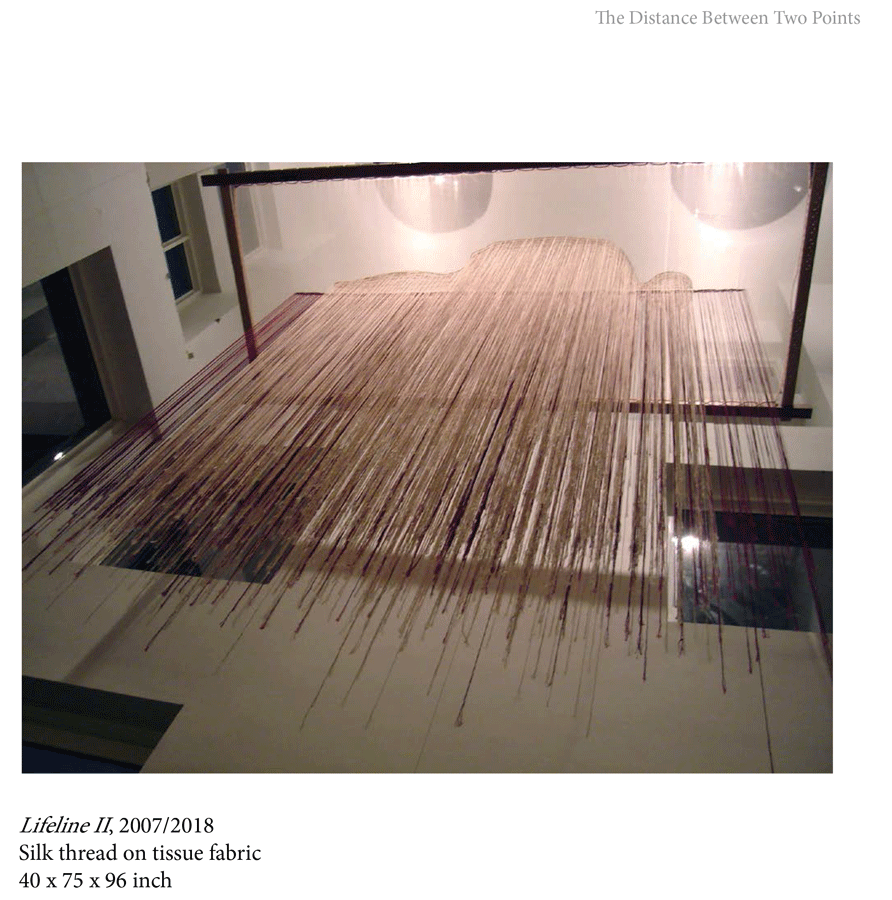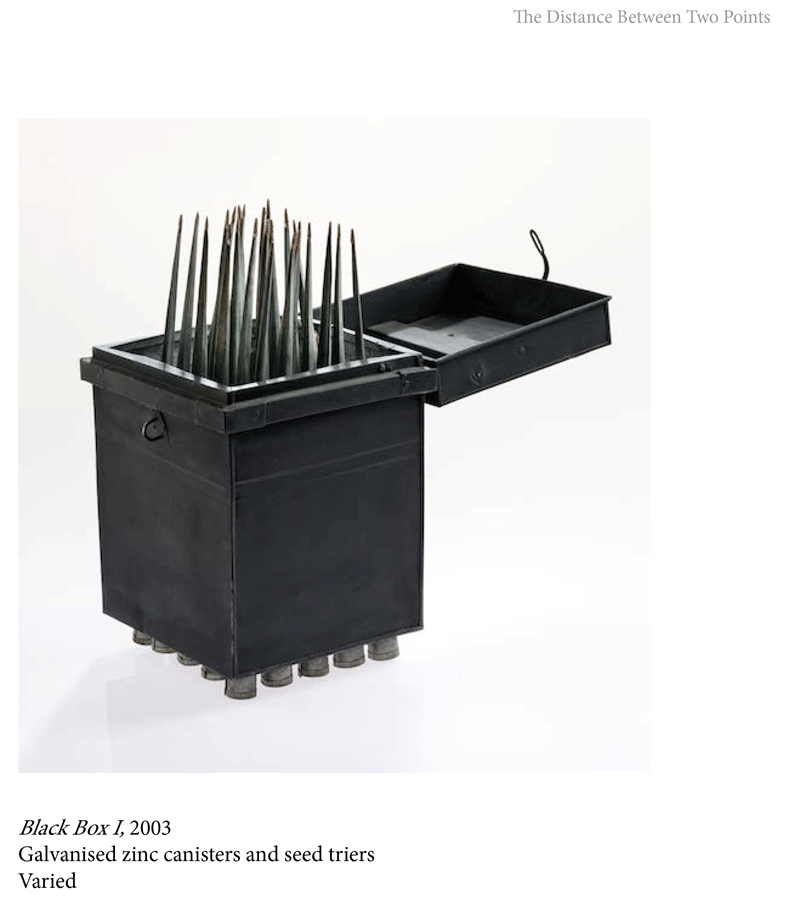Art Review: Artist Roohi Ahmed
By Nusrat Khawaja | Art Line | Published 7 years ago

There is pleasure and pain involved in viewing conceptual artist Roohi Ahmed’s work. The precision of lines and the well-plotted interstitial spaces between the rendered objects creates tremendous cogency for the eye of the viewer to assimilate the visuals.
A solo exhibition of Roohi Ahmed’s work at AAN Gandhara Art Space titled The Distance between Two Points was curated by Aziz Sohail. He preferred to call the assembled works a “survey” of Roohi Ahmed’s artistic trajectory rather than a “retrospective.” The display is selective rather than comprehensive and it spans the years 1999 to 2018. Aziz intended to create opportunities for dialogue and cross-comparison by thematically presenting the works under the categories of Mapping, Raveling/Unraveling and Piercing. The show reveals Roohi Ahmed’s cerebral temperament which tends towards a minimalist expression. It is interesting to see how themes remain constant even when expressed through different mediums.
The term aniconic is rarely applied to contemporary art but the nature of Roohi’s work – avoiding figural representation as it does – demonstrates a clear aniconism. She relies on metaphors and symbols to delineate the human condition. This existential stance is manifest in her treatment of geometry, space and gender.
Roohi’s Black Box I,II and III, sculpture series (2003) made from galvanised zinc canisters and seed triers, are enigmatic pieces. The concavity of the box and the convexity of the conical triers play off one another. The former encloses space and the latter extrudes through it. The fit is not quite right and the discordance hints at the discomfort of existence.
The Constellation series (2013) – worked on fabric squares with brocade borders – and the Fasla series (2014), show cartographies of city routes and fragments of territory. They invite dialogue on the nature of navigated space, its divisions and boundaries – all demarcations that have conceptual analogies with regard to intangible personal space and boundaries of self. A brass sculpture called A Straight Line (2018) creates a broken outline of Pakistan’s western border. The title is ironic as the boundary is neither straight nor uncontested.
The collographs, Nowhere and Here and There (2007), play with curved and linear geometries. Elements within these prints – conical shapes, grid markings, needle-shaped markings – become an intrinsic part of Roohi’s visual alphabet and their recurrence across various media can be followed over the years.

Along the course of her artistic progression, Roohi added the imagery of the needle, the thread and the colour red. One may interpret this as the development of ontological expression in the artist’s work, querying the nature of what it is to be in the world. The imagery has metaphorical significance. It relates to the archetypal condition of being human and particularly to a state of womanhood. If Only it Was I and II (2014) are assemblages created with embroidery hoops, tattered cloth and silk thread all in red. The cut away shapes in the fabric bear a resemblance to the cartographies delineated in the Constellation and Fasla series.
The definition of a boundary continues to be challenged in these shapes. Space can be envisioned spatially as well as psychologically. Its definition is complex and subject to shifting perceptions.
Two powerful works in this exhibition may be studied in conjunction with one another to reveal the artist at her most metaphorical and – by contrast – at her most visceral.
Lifeline II (2007/2018) is a large installation of silk fibres suspended from fabric which is stretched across a wooden frame. The length of the fibres necessitated this installation to hang in the stairwell of the gallery between two floors. The hallmarks of Roohi Ahmed’s precise and aniconic style show up in this work. It is beautiful, archetypal and enigmatic. The fibres cascade like a waterfall that has been frozen in time. It could be a metaphor for a primal state of being.
The video titled Out of Bounds (2018) is disturbingly visceral. It runs to just over 30 minutes and it shows the artist making precise stitches with red thread through the epidermis of her hand and subsequently unpicking each stitch. The imagery is surreal and the regular pace of the stitching is hypnotic.
One piece, noticeable by its absence from the show, was the one created by the artist for the Karachi Biennale (2017). Encounters of Another Kind, was displayed in the hall of the Theosophical Society building. It showed a cluster of quilted, cut-out figures made from red silk. This was a very different expression by the artist as it broke out of the non-representational mould and relied rather more on graphics than she typically allows. Nevertheless, the survey of Roohi’s work, The Distance between Two Points, succeeds in shedding light on a gifted artist’s trajectory and creates curiosity regarding the direction her work will take. n


